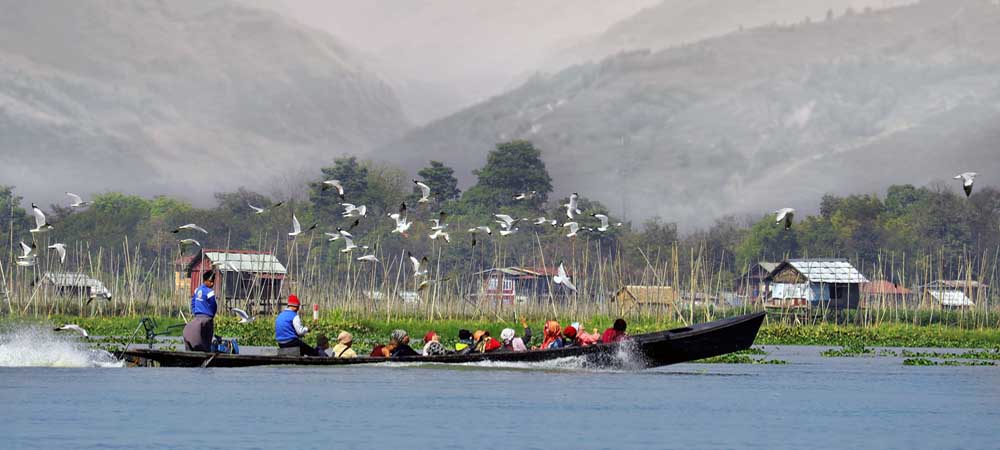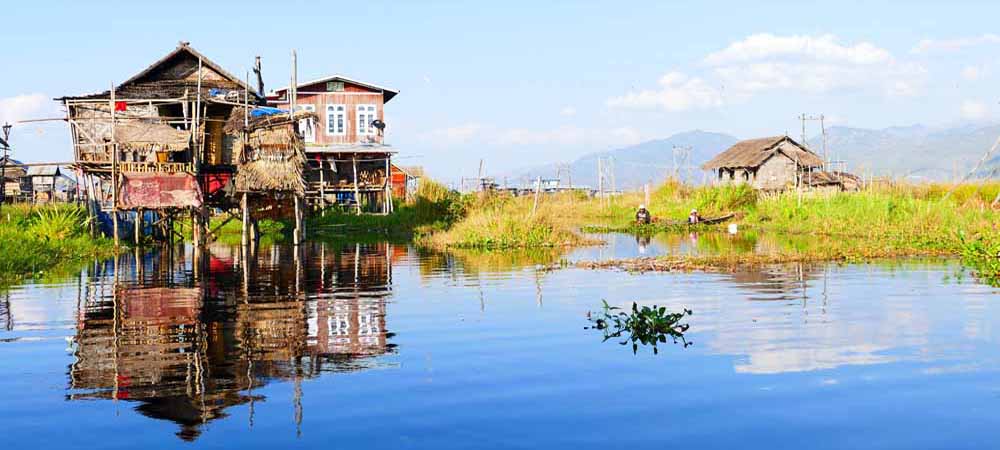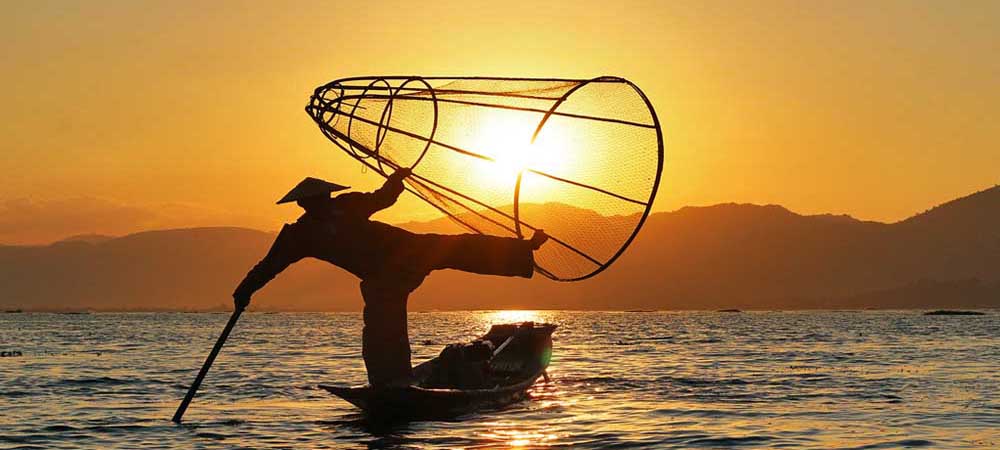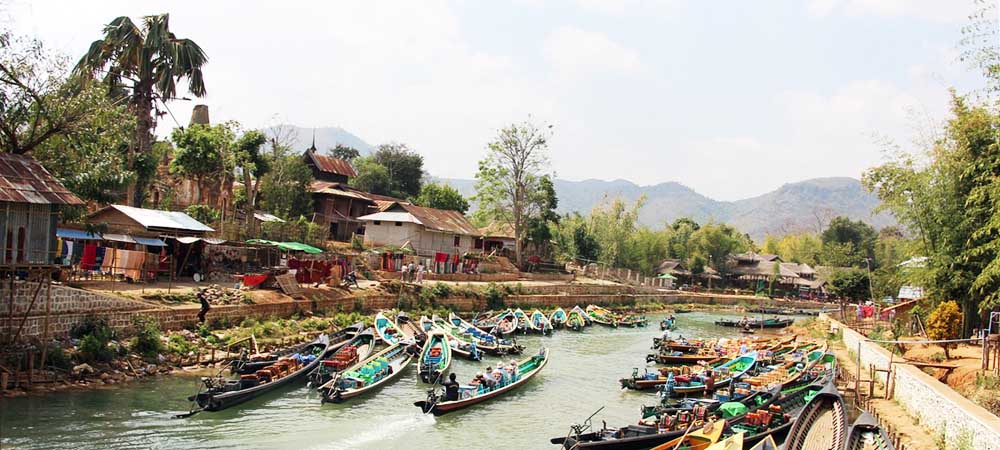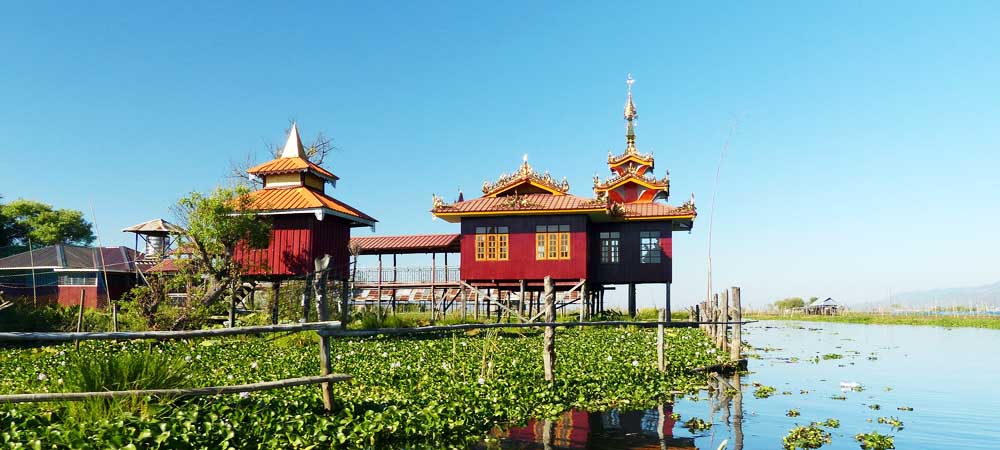Formerly known as Burma, Myanmar is an exciting new front on the Southeast Asian travel scene. With its doors flung open in just the past few years after decades of isolation, Myanmar remains one of the planet’s last frontiers in terms of genuine culture, dazzling centuries-old landmarks and alluring natural beauty. This article invites you to explore with us one of Myanmar’s most fascinating destinations: Inle Lake!
Located in slightly south and east of Myanmar’s center, Inle Lake resides in the Shan State, one of the country’s seven states comprised of over 100 different ethnicity. This expansive seascape features floating gardens; fishermen in wooden boats with conical nets, making trails through the waters with their unique leg-rowing style; and stupas or pagodas flanking the water’s edge, reaching skyward with their fine spires.
Inle Lake offers sights and experiences you’ve likely never seen before. The communities that exist there have made Inle Lake their home and livelihood, exchanging business and trade aboard their boats and even creating intricate gardens atop the surface that produce local vegetables, especially tomatoes and cucumbers. About 25% of Inle Lake consists of these floating gardens, which start off as a mass of lake-bottom weeds. The border of Inle Lake is vague, as it becomes marshy and sometimes spotted with the bamboo or wooden teak houses resting on stilts. Structures vary between simple huts to sturdy, multi-level dwellings, some even with satellite dishes attached.In June 2015, Inle Lake became Myanmar’s first designated place of World Network of Biosphere Reserves. The lake is a fascinating microcosm to behold – placid waters and low hills fill your eyes, then subtle movements and life become apparent on the lake. On a clear day, the glass-like water is only nudged by a ripple or two of a boat passing through. Boat transport is everything, for getting to the neighbor’s house, the next village, or for conducting business. The people of Inle Lake are famous for their rowing style, with one leg planted in the boat, the other wrapped around an oar, and their hands free to manipulate the conical fishing nets over the water.
One of the unique forms of business on Inle Lake is the Five Day Market. The Five Day Market rotates each day and allows each of the participating towns to host the market. Each day, the market moves to a different spot, to give fair chance at market attendance and participation across the entire lake. The markets are a traffic jam of the longboats nearest a shore. Later attendance means hopping through others’ boats to reach land. For the people of Inle Lake, it’s no big deal, but it can be precarious as a foreigner with an unsteady foot. The markets not only hail people from the lake, but from the many mountainous tribes as well.
On the lake, visit different craft workshops, including jewelers, paper makers, silversmiths, and lotus weavers, who take the fibers from the lotus plant and weave them into fine silken fibers. Shan-bags, which are like every-day tote bags, are produced in great quantity here, and the unique lotus weavers are found nowhere else in the world. Enjoy a Burmese cheroot, a cigar clipped at both ends.Inle Lake and its surroundings host numerous ethnic and minority groups. The predominant culture is the Intha, who live in four cities bordering the lake. The other groups include Shan, Taungyo, Pa-O, Danu, Kayan, Danaw and Bamar, the latter being the predominant group throughout Myanmar. There’s no shortage of brightly colored cloths, worn across the body, some on the head, across the variety of ethnic groups. Many women, some men and boys are covered in thanaka paste; often the women wear circular or other designs on their cheeks and nose, while in some rural villages, it is applied all over. Thanaka paste is made from ground up wood, often from different trees. Besides the aesthetic qualities, thanaka serves different purposes, including delivering a cooling sensation to the face, sunblock, and is believed to help with acne, in addition to its antifungal properties. Commonly, men are dressed in longyi, a floor-length wrap tied from the waist, and some women wear a htamain, like a skirt or wrap as well. The Kayan women and girls walk proudly with their rings around the neck, elongating them to their standard of beauty.
Making way through narrow canals, Inthein (also Indein) village is another amazing destination. What’s unique about Inthein are the seemingly endless groups of stupas, dome-shaped Buddhist shrines with sharp spires punctuating each of their tops. Much overgrowth has tangled around some of them, like the Nyaung Ohak, but the tall peaks reach still to the sky. Climbing up stairs behind Nyaung Ohak to Shwe Inthein Paya reveals more stupas, over a thousand; some gold, some a natural stone color.
One of the exciting times during the year for the Inle Lake are the Phaung Daw Oo Daya festival. Phaung Daw Oo Pagoda is considered the holiest site and monastery in the Shan State. Located in Ywama Village on the lake, this monastery houses five sacred Buddha images, or statues, ranging from 9 inches to 18 inches. These statues are over 800 years old, brought back from King Alaungsithu’s travels from the Malay peninsula in the 12th century. Now, the statues merely resemble a vague shape due to the numerous pilgrims that come to visit and pay homage by applying gold leaf to the image. The statues are so covered that they’ve lost their detailed shape and now resemble textured golden gourds.
In the Burmese month of Thadingyut, which falls in our September/October, the 18-day Phaung Daw Oo Daya festival marks the beginning of Buddhist Lent. It is the most important holiday in the Shan state. Only four of the five images are since taken around the lake. In 1965, a storm capsized the barge carrying the five images, and only four were recovered at the site. Upon returning to the pagoda, the fifth one was mysteriously discovered, covered in weeds. Ever since, that image has remained at the pagoda during the festival parade. The original site where the barge capsized is marked by the mythological hintha bird, sitting atop a pole.
The four, gold-leaf covered Buddha statues are paraded around the lake in a huge, royal barge lined with people, towed by the traditional longboats filled with Inle leg-rowers, and tons of smaller boats following its path. The barge is a stunning sight to behold, with its golden hintha bird head framed in golden peaks at the bow, transitioning to the golden pagoda at its center, and giving way to the golden feathered end at the stern. The hintha, or hamsa is a bird of knowledge, and most resembles a goose or swan. People watch from their boats or from shore, admiring the ornate, geometrically-detailed shining golden shape floating majestically among the 14 villages surrounding Inle Lake.
During this time of year, several events occur during these eighteen day celebrations. Traditional boat racing features numerous men packed into a long boat, each standing with their leg wrapped around their oar, paddling fiercely though the water. Dancing and fairs also make up the festivities.
Inle Lake is a fascinating destination in Asia’s up-and-coming Myanmar destination. Embark on a timeless journey of intrigue and adventure. Learn more about this and other Myanmar adventures on our Indochina & Myanmar tour packages page, or by calling 1-800-785-1233. Your most enchanting travel expedition awaits.

